Staircase paneling ideas to try, from how to use color to mixing modern and classic styles
Draw inspiration from these staircase paneling ideas and transform a plain space into something special

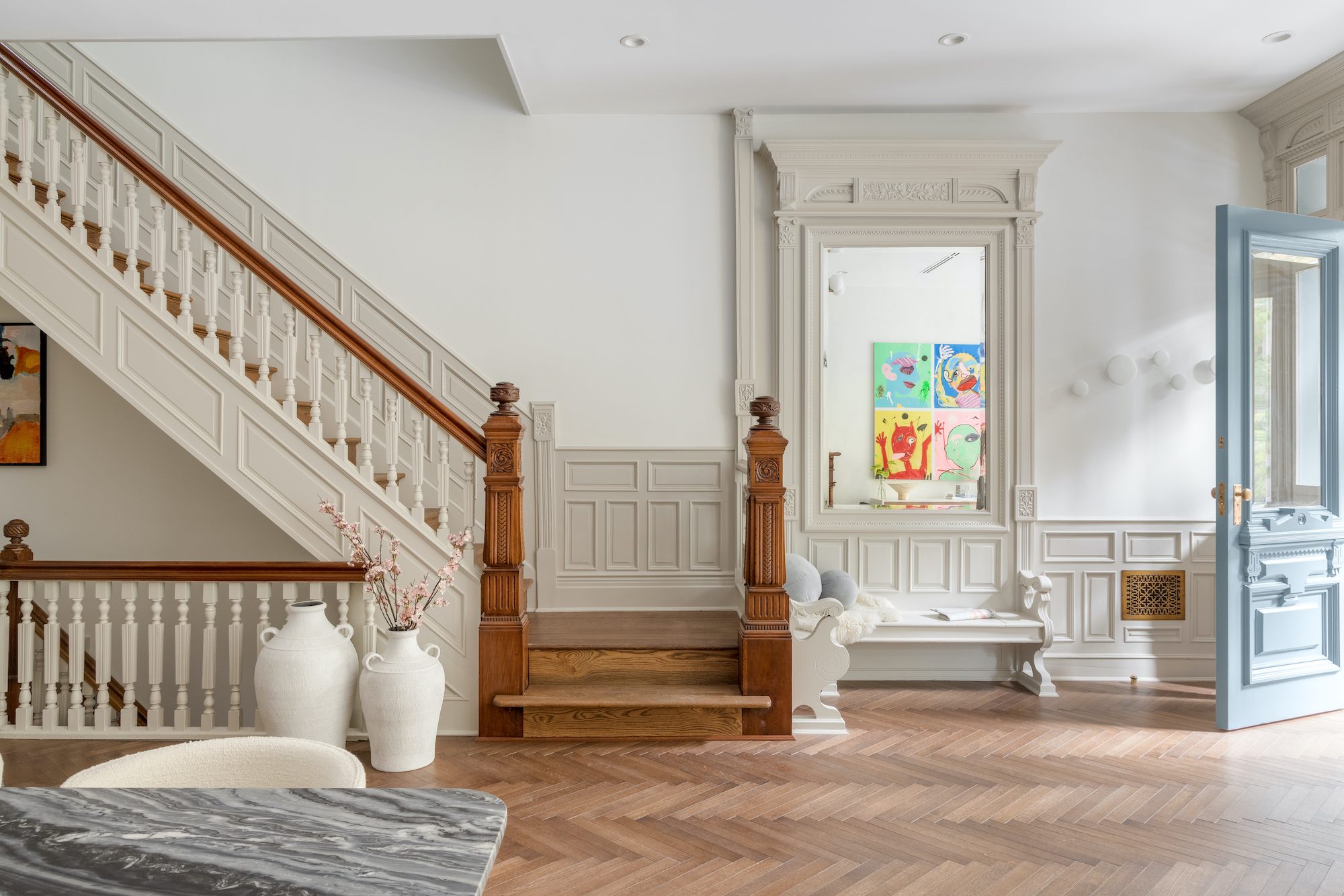
There's a reason you see staircase paneling often used in homes. Yes, wall panels are a brilliant way to add character and charm to a space but, ultimately, it's a practical decision.
Whether stained or painted timber, or a more modern composite material, staircase paneling will protect your walls from the wear and tear of this high-traffic area, ensuring these transitional spaces endure for longer.
Fortunately for us, not only is paneling a great staircase idea because it's practical - it looks great too. 'Staircase paneling is great because it creates a natural transition between the levels,' says Diana Rose, principal, and creative director at Diana Rose Design.
So, why not take a chance with wall panels and enhance the transitional space with light hues, moody darks, and natural wood tones. Here, we've collected some of the best ideas along with expert advice from interior designers to inspire you. Take a look.
Staircase paneling ideas to suit every home
1. Use paneling to moderate height in lofty spaces

Paneling is a particularly great staircase wall idea for double-height entryway, for example, as it can be used to visually bring down the ceiling to stop the space feeling too cavernous.
'The main reason we elected to add wall paneling to this stairwell was to break up the height of the two-story walls,' says Brad Ramsey, founder and principal designer of Brad Ramsey Interiors .'By taking the panels up to the height of the chair rail in the upstairs hallway, we were able to divide the large wall to give it more visual appeal.'
'In addition, we utilized the panel design to create a hidden door for the coat closet under the stairs. We maintained the character of the entry without having a door breaking up the beauty of the space. A win-win!'
The Livingetc newsletters are your inside source for what’s shaping interiors now - and what’s next. Discover trend forecasts, smart style ideas, and curated shopping inspiration that brings design to life. Subscribe today and stay ahead of the curve.
2. Match paneling to your home's architecture
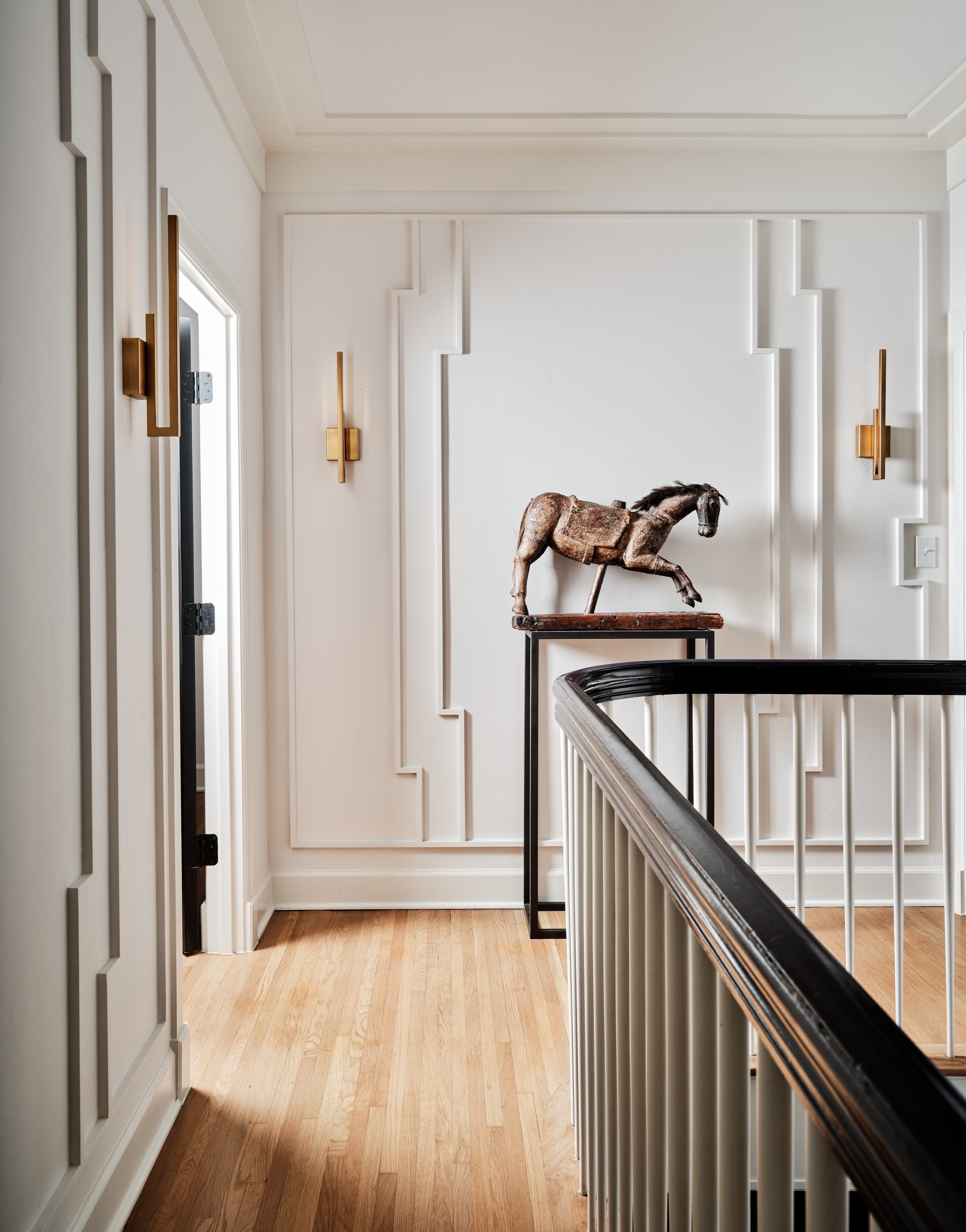
Classic wall paneling is usually applied in traditional ways, to make it look like it's been in the home forever, giving it an old-world charm. Whatever the age and style of your home, there's likely to be a wall paneling that fits the bill.
'In this design, the paneling was used to allow the walls to be design elements,' says Eddie Maestri, principal architect of Maestri Studio. 'We wanted to enhance and "dress up" the space in a muted way. The paneling is also a cohesive detail that aligns with the style and architectural period of the home.'
3. Match the paneling to the staircase
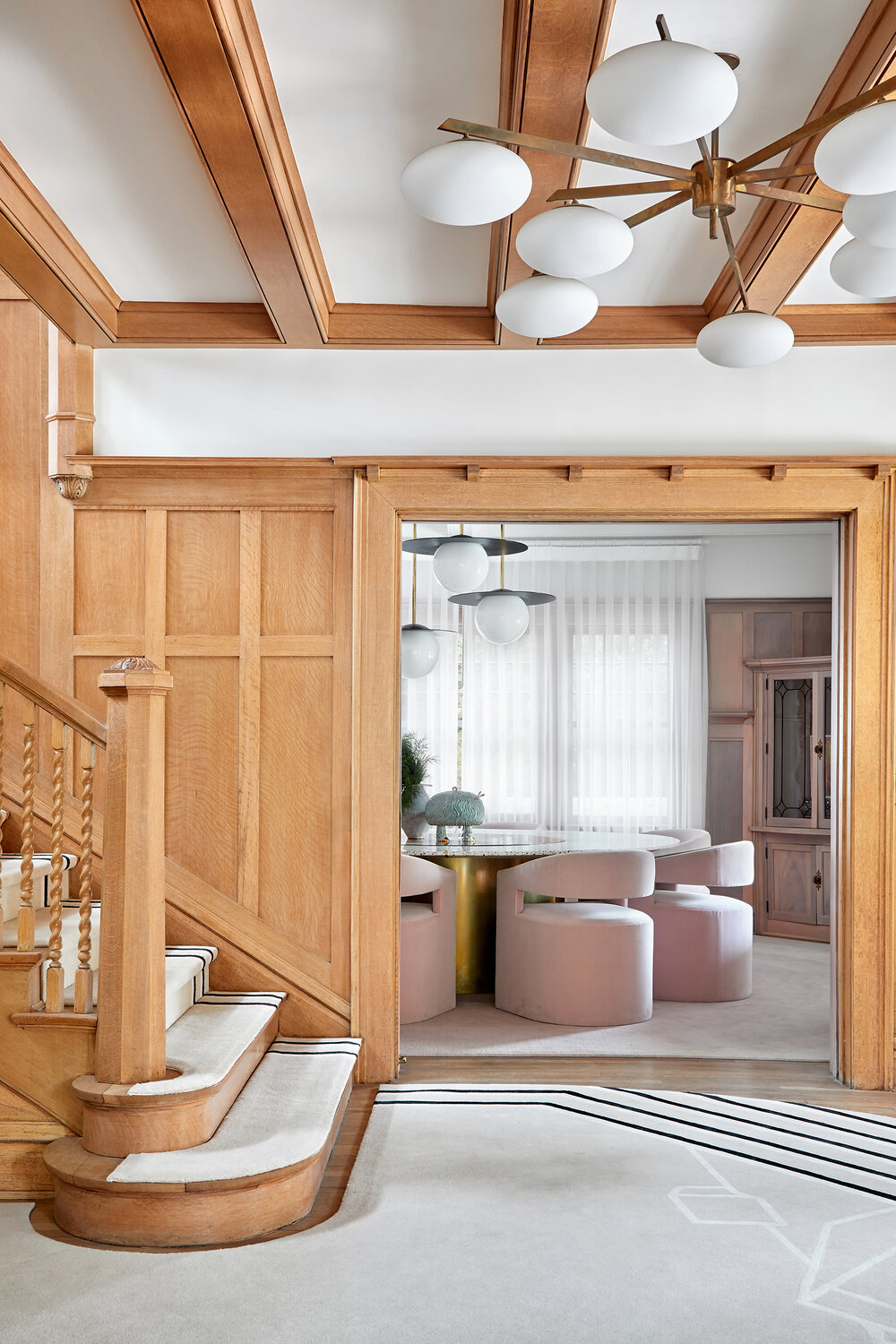
In the case of solid wood, grand staircases, enhance their look further with matching paneling to bring warm organic tones to the room. If the staircase leads to a hallway, continue the paneling in that space as well, for an earthy vibe. Select a deep wood tone that gives a nod to a historic home and injects a nautical feel.
Do keep in mind, however, that a woody staircase can become dark and dingy easily. Go for smart, functional staircase lighting ideas to ensure this space becomes the striking focal point of the home.
4. Consider paneling to connect large staircases
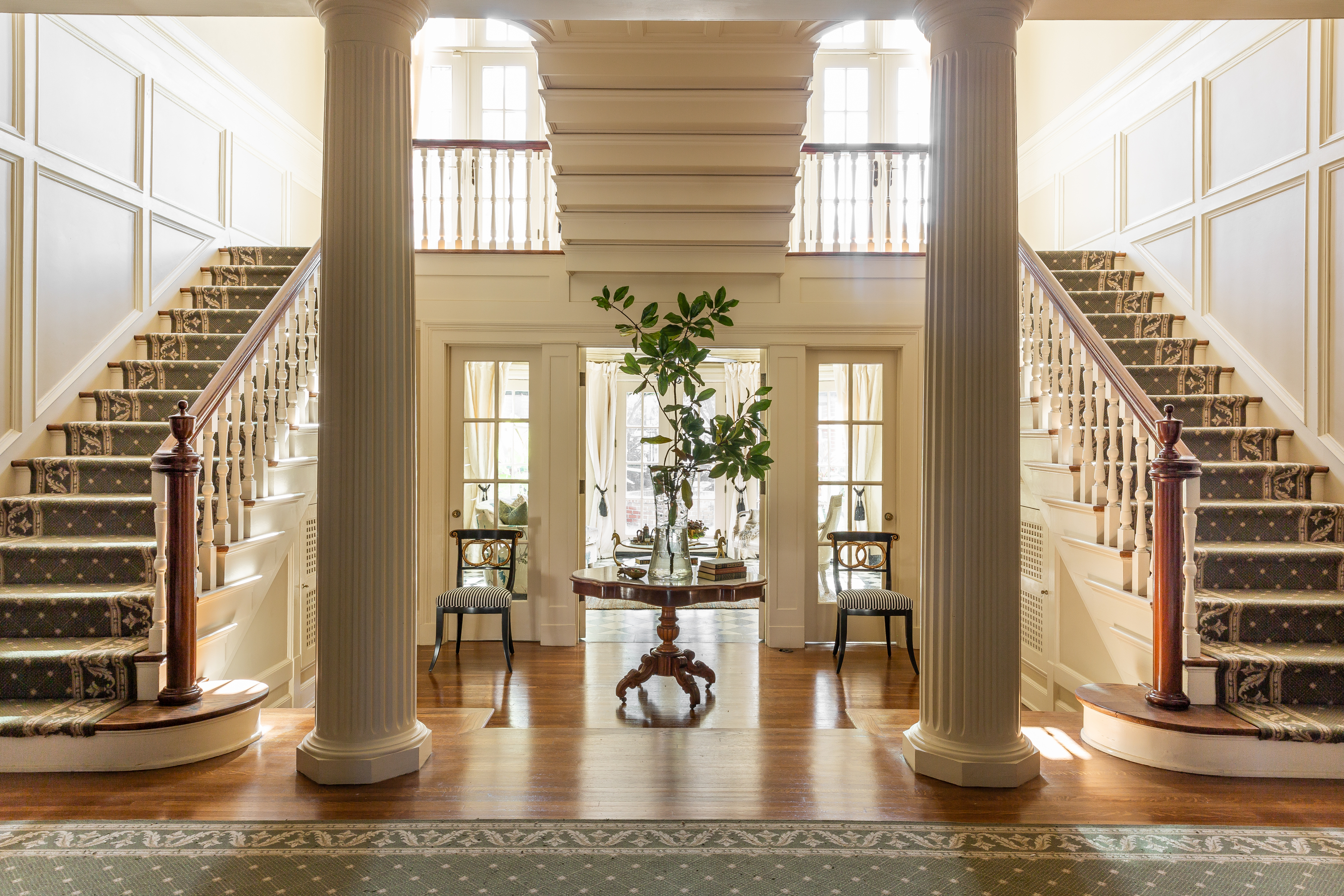
Use paneling as a connecting, unified element in large spaces. Textures and bold patterns on walls bring spaces together and make them look more cohesive and in sync. As part of your staircase decorating ideas, use this design trick to bring two sets of stairways together.
'Stairwells are the connectors between liveable spaces, and therefore, are limited in ways to create a visual appeal,' says Lance Thomas, founder of Thomas Guy Interiors. 'In an effort to not be neglected aesthetically, paneling is a great solution for these high-traffic areas. Paneling adds visual interest to an otherwise utilitarian space. It complements the architectural detail and millwork of the staircase, creating warmth and depth.'
5. Create a cozy space with shiplap panels
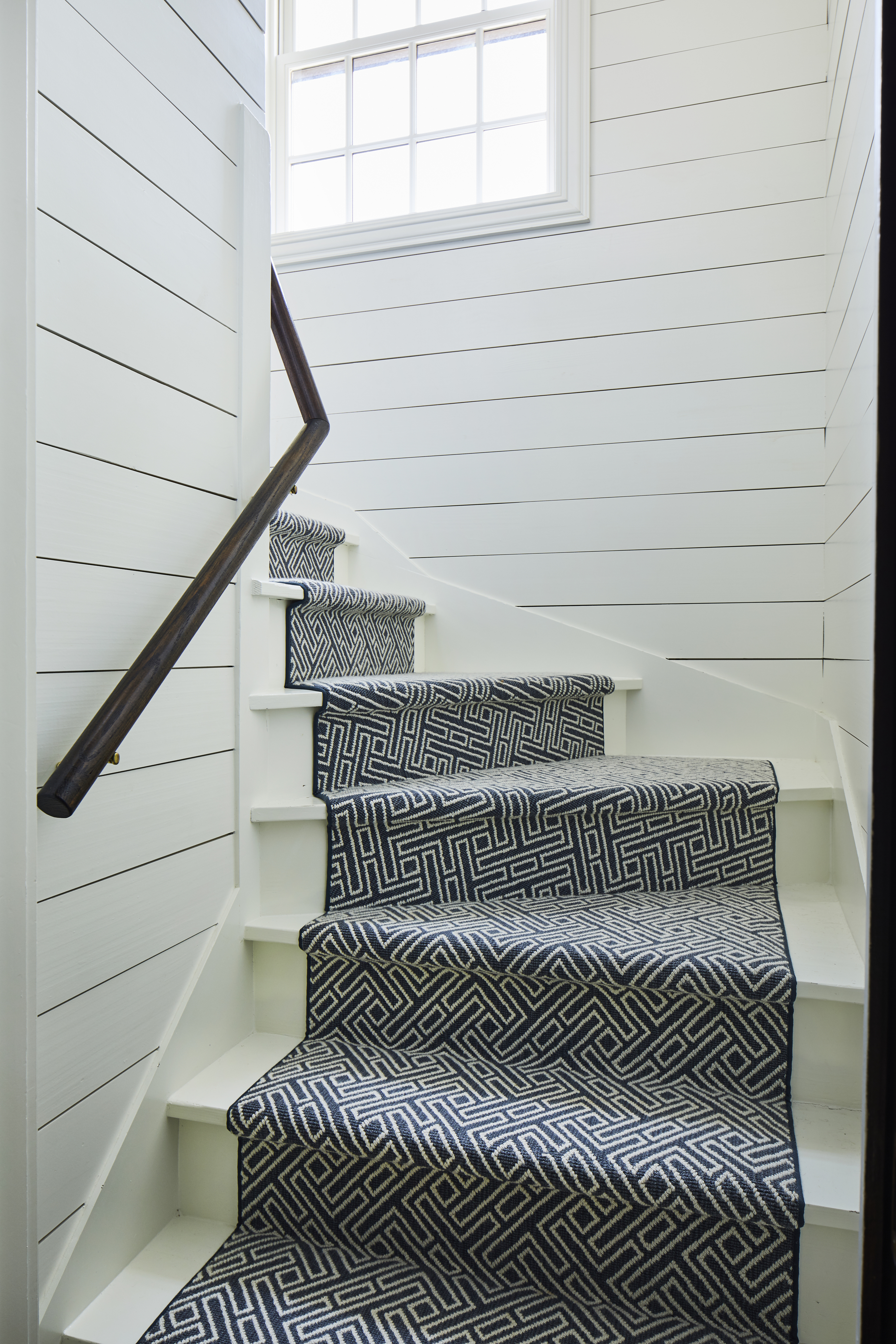
Shiplap paneling is a design staple across the US, adding a rich texture and that iconic striped pattern that's synonymous particularly with modern rustic and coastal homes.
In this space, while the staircase runner adds movement to the narrow space, the paneling in white gives more airy feeling.
'My ears perked immediately when our clients mentioned they love Art Deco,' says interior designer Mel Bean. 'This inspired many details in the space, including the lighting and the tiled entryway. I'm thrilled with the elegance of the entry stair with the wood panels, which is visible from several spaces. It's a stunning focal point in the home.'
6. Create a contrast with the wall panels and staircase
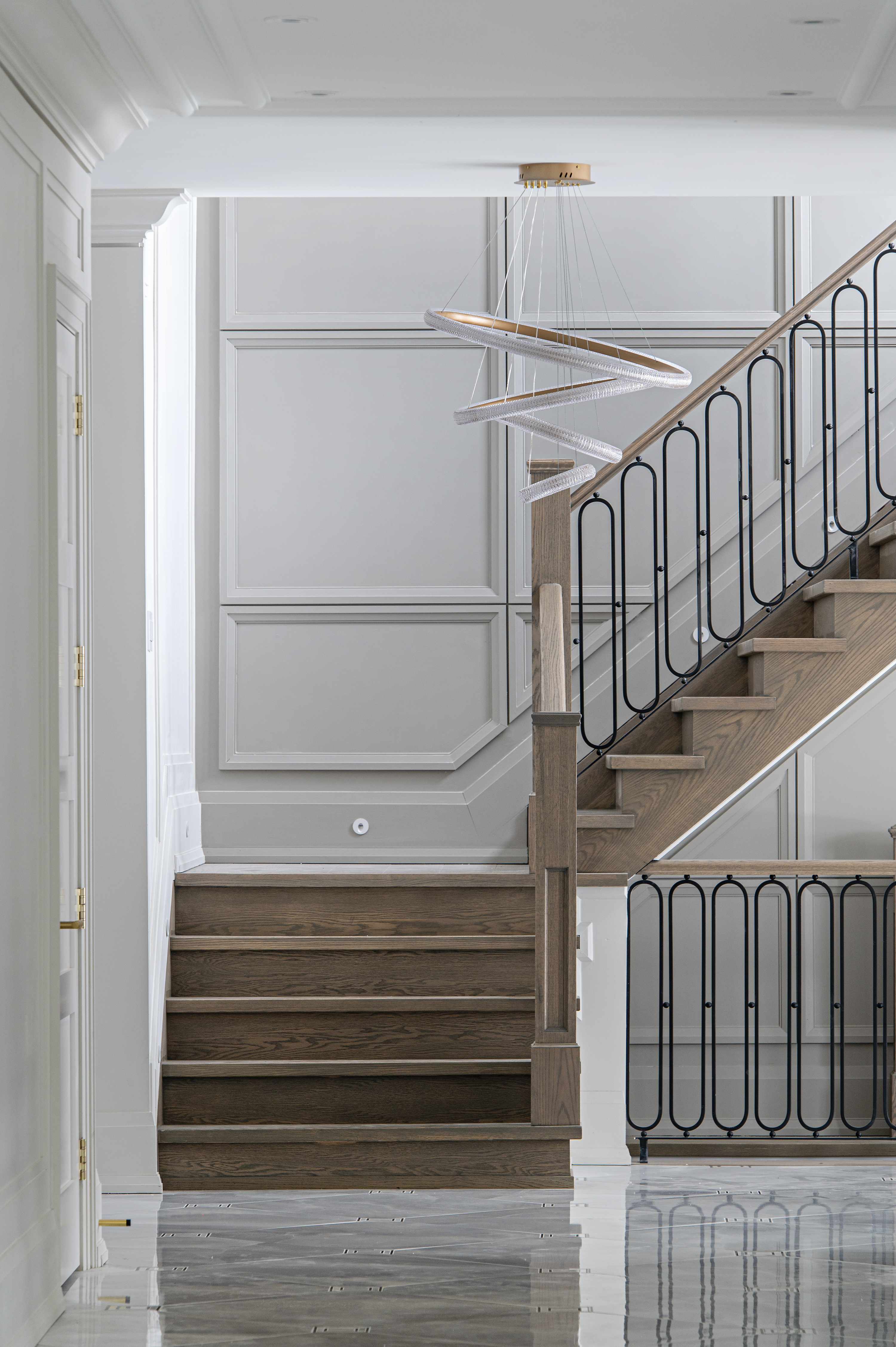
Whether you're designing a new staircase, or installing paneling into an existing one, think about creating constrast in your design. This may be material, color or even style, mixing and matching traditional with contemporary.
'I love playing with contrast when dressing up staircase walls,' says Diana Rose of Diana Rose Design. 'If the stairs are traditional with closed-risers, it is a great idea to do clean and elegant panel design with simple molding, but create repetition. If, on the other hand, the stairs are floating, with open risers, then the panels can be more elaborate. It is all about balance.'
I also love throwing an accent colour on the staircase panel wall,' she adds, 'to really make it stand out in the space and again, highlight the interior architecture: staircase and railing.'
7. Use wallpaper with paneling on stairs
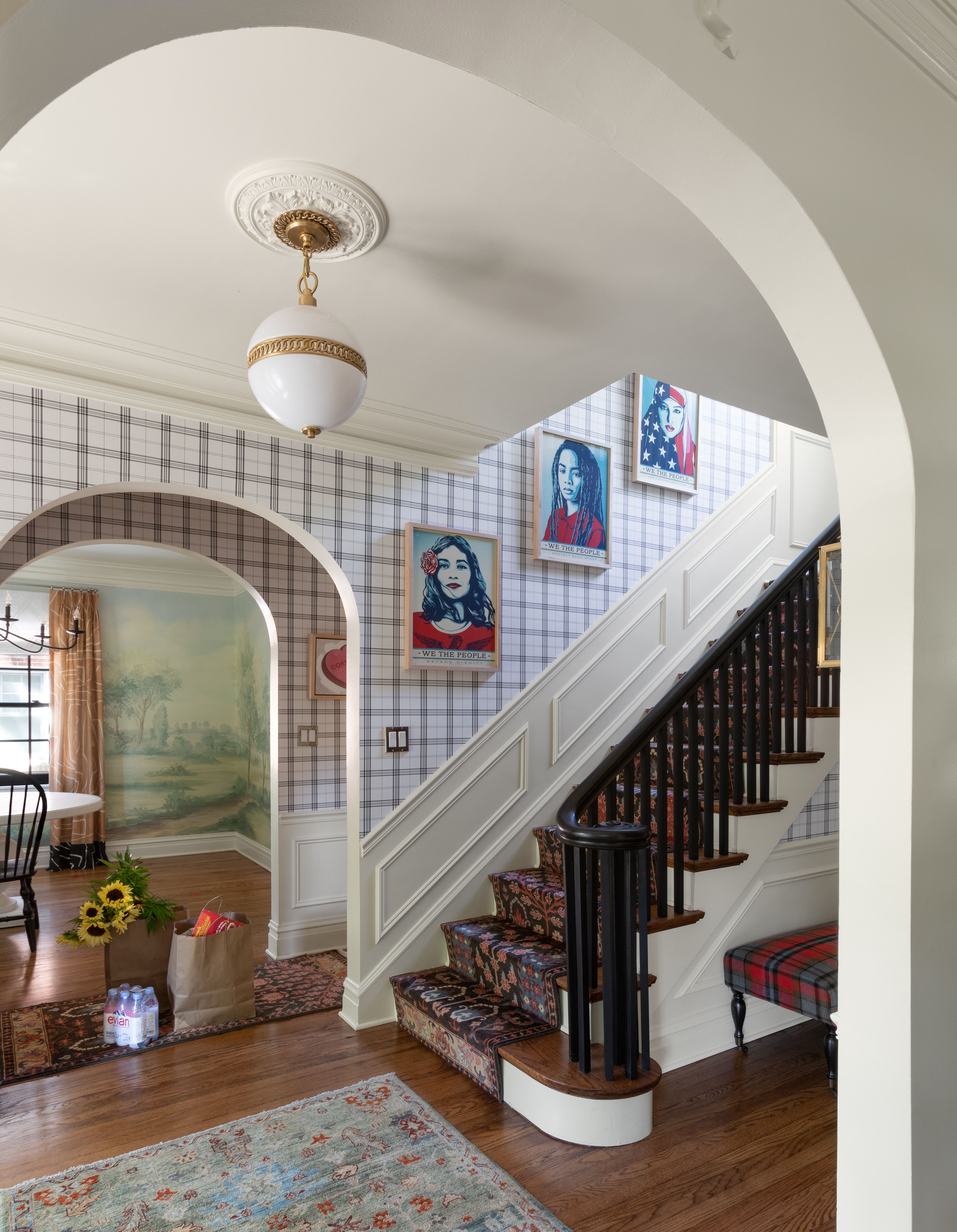
For a dynamic staircase, go for half wallpaper and half paneling. Consider adding a color for a painted staircase, and transform the wood into something that's perfect for your home.
'We elected to install wainscoting in the foyer and up the stairs on this project to provide a touch of formality to this more whimsical space,' says Mark Lavender, principal designer of M. Lavender Interiors. 'It also provides a nice straight edge to catch the wallpaper on the stairs, ties everything together with the foyer at the bottom and the large landing/hallway at the top. We typically design wainscoting on stairways when we are using wallpaper on a wall for the clean lines along the irregular look of the stairs. Wainscoting also provides a nice break between the pattern of the stair runner and the design of the wallpaper.'
'We designed this wainscoting out of wood trim and attached it directly to the drywall,' says Mark. 'We then painted the drywall in a semi-gloss finish to give the appearance of wood paneling. Works every time.'
8. Use a dark and light color combination
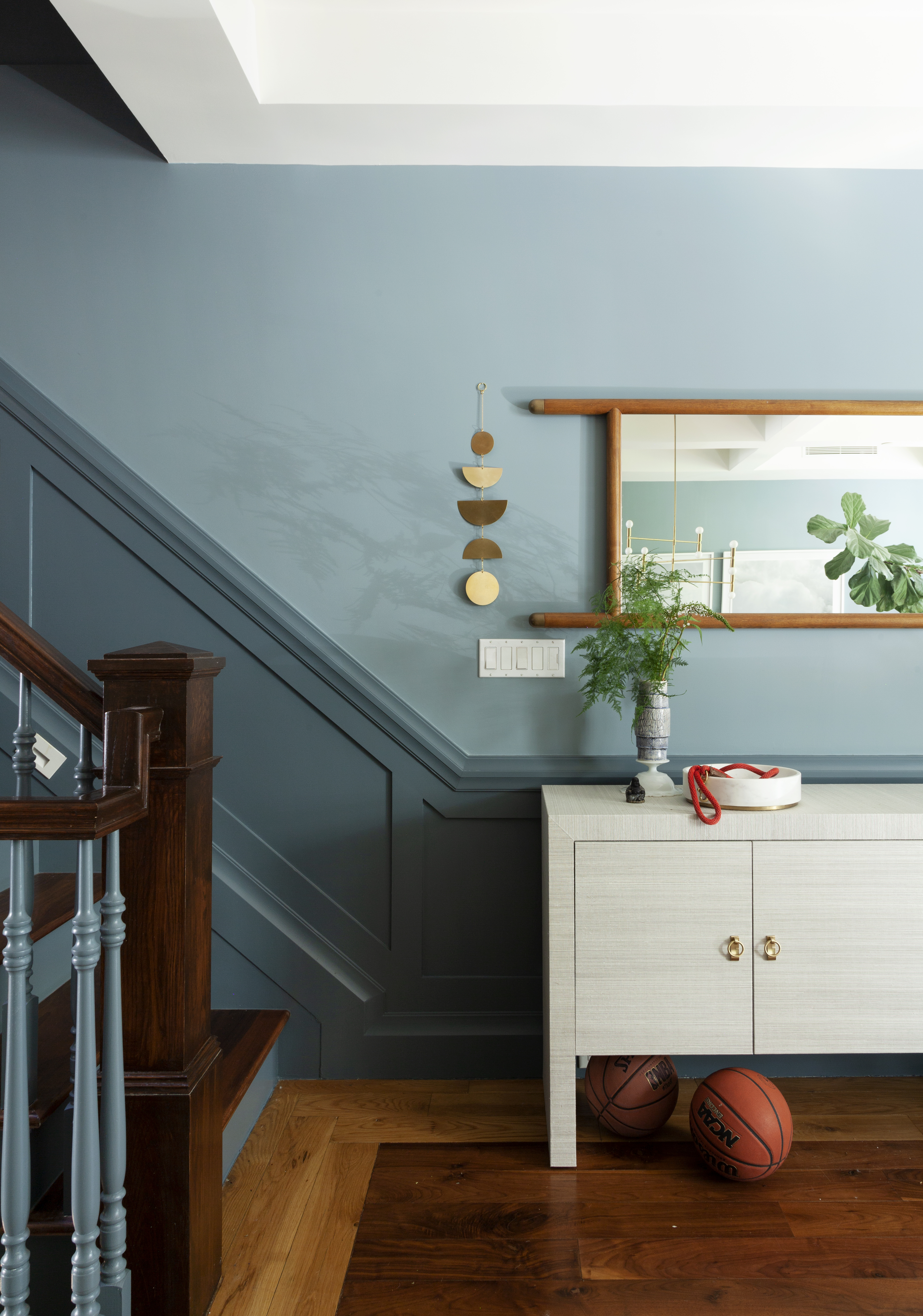
A great wall color combination is a lighter wall with a darker paneling or vice versa. This will give a distinctive look to the wall, and allow the paneling to stand out as the hero of the design.
If your stairs and floor are light in color, you may wish to choose stronger shades for the paneling for contrast. Similarly, if you have darker flooring, choose lighter tones to brighten up your staircase, giving the illusion of space and light in an area that can seem dingy.
You could even paint your woodwork or dado rails in a different tone for a more detailed design.
'This faux wainscot was already existing and was painted to highlight the fact that the panel was part of the wall surface,' says Rachael Stollar, partner at New York-based architecture and design firm Studio SFW. 'The trim was all applied around this same surface. This isn't unheard of; it's a good way to shave off a bit of expense vs a full millwork panel. The better approach to finishing is to paint everything below the rail the same color and sheen to camouflage the less costly construction method. Millwork and trim are usually painted a higher gloss sheen than the walls.'
9. Add vertical wood panels to make the staircase seem taller

Paneling, of course, is one of the fastest ways to add charm and interest to the ceilings and walls in any room. But this classic wall treatment is also an effective way to cover old, damaged walls, or even create the illusion of height. Long, vertical tongue and groove panels not only add interest but also plenty of functionality.
Whether you're looking for ways to expand your hallways, the entrance, or the staircase, the trick with tall panels can work everywhere.
How to install wood paneling on stairs?
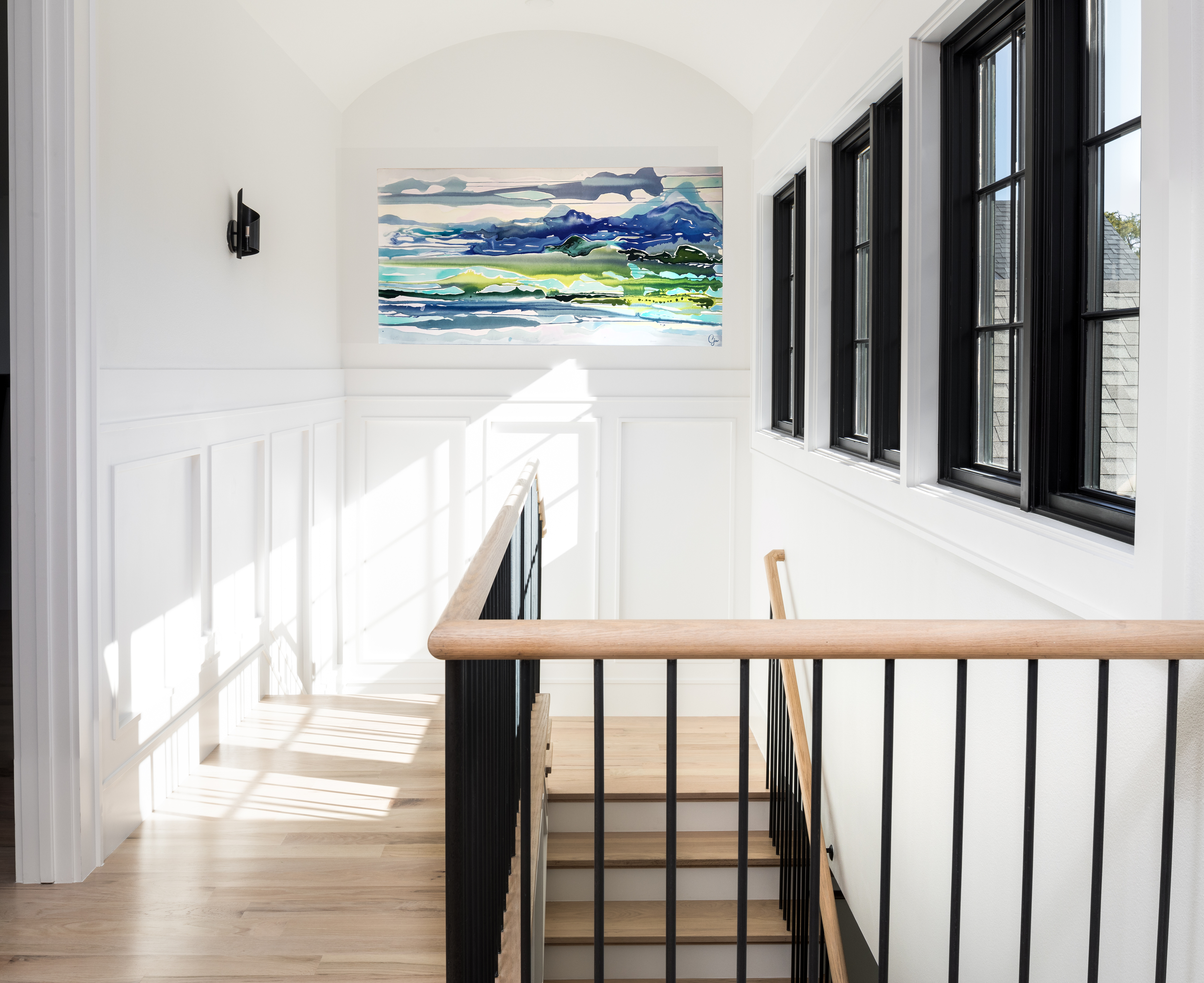
Installing wood panels on your walls can make for a great weekend project, that you and your family can undertake together. Before the installation, first, measure the staircase and take note of any fixtures or fittings like sockets and more. Take into consideration the height of the wood panels you'll need. Also, check the drywalls to see for any uneven ridges and issues. You may have to sand the existing walls to create a smooth surface for the panels to sit on.
Depending on the design you have chosen, use wood glue to install the panels on the walls. Apply the glue and use pins to hold the panels in place. Once dry, you may need to sand them to ensure a flawless finish.
Once the fitting is done and, all the holes and gaps have been filled, make sure the surface is clean and there is no residual dust. Paint the panels with a soft brush. Apply a second coat once the first one dries.
Can you place wallpaper panels on stairs?
While wood panels are traditional and conventional, panels made with wallpaper can be an eye-catching addition to the staircase area. Go for bold, graphic prints and evocative designs, and experiment with textures. Since this is a space that you pass by rather than stay for long, you can afford to be bold with the scale, color, or texture of your wallcoverings.

Aditi Sharma Maheshwari started her career at The Address (The Times of India), a tabloid on interiors and art. She wrote profiles of Indian artists, designers, and architects, and covered inspiring houses and commercial properties. After four years, she moved to ELLE DECOR as a senior features writer, where she contributed to the magazine and website, and also worked alongside the events team on India Design ID — the brand’s 10-day, annual design show. She wrote across topics: from designer interviews, and house tours, to new product launches, shopping pages, and reviews. After three years, she was hired as the senior editor at Houzz. The website content focused on practical advice on decorating the home and making design feel more approachable. She created fresh series on budget buys, design hacks, and DIYs, all backed with expert advice. Equipped with sizable knowledge of the industry and with a good network, she moved to Architectural Digest (Conde Nast) as the digital editor. The publication's focus was on high-end design, and her content highlighted A-listers, starchitects, and high-concept products, all customized for an audience that loves and invests in luxury. After a two-year stint, she moved to the UK and was hired at Livingetc as a design editor. She now freelances for a variety of interiors publications.